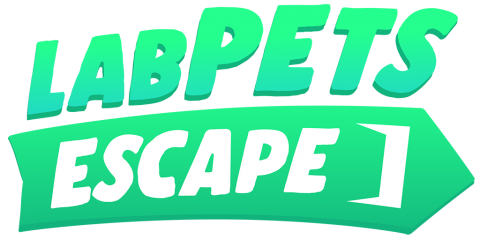
YOU! Are the brain in this operation to escape the lab through a non-linear maze of lab rooms and tricky test chambers on your way out. How many can you save?

Genre: Escape Game Platformer
Players: 1
Target Platforms: PC, Consoles
Release: tba
Status: Alpha Prototype
LabPETS EscapeA Room escape platformer, inspired by games like Lemmings, Worms, Angry Birds and MGS-like stealth elements. Lets get creative, try your best saving as many as you can on your way „out“.
Your goal is to rescue lab animals with different abilities and attributes,
getting them to the exit point of each level, overcoming deadly traps, machines and deadly predator guards like doggies and kitties.
Find the Masterkeys to unlock different areas.
Tough choices. Sometimes sacrifices have to be made to lure away guards, to save the others. Also a bad way to trigger traps, literally taking one for the team.
The player has several “tools” at his disposal, which in combination with the animals and environment, help the player to get the pack to the ‘Exit Door’ in multiple creative ways. These items and tools could be things like rockets, ropes, firecrackers, rubber balls, potions and other things to help you on your way out.
Each level is a semi-linear sandbox with one or more problems to solve and multiple ways to finish a level your way. First Levels start in a rather linear fashion to teach the player the basics and creative problem solving, then get deadlier the further the player progresses towards the multiple Exit Points.
Prototype videos
Downloads (as soon as ready)
First conceptual prototype iteration, UNITY 4.3
A first rapid prototype to study the engine and performance In 2D only, the first original concept was played and controlled more like a Point & click RTS game that we changed to the alternative route, by controlling the Escapees directly, which felt immediately much more engaging and immersive, faster. Also way easier to produce and allows for more variation and complexity in level designs.





























